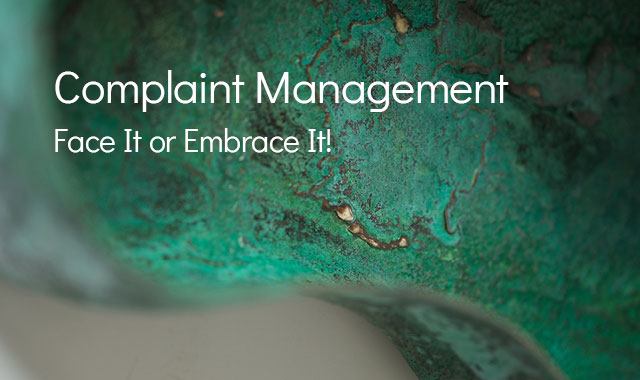This time the headline says it all and you already know we are about to tackle a very tricky topic in the industry, complaint management, and the fact that it can be both a failure and a success story. The thing is that the way you approach it with your team is the one factor that will place it in any of the above categories.
Complaint Management vs Quality Assurance
Believe it or not, these two are not the same thing, so the fact that you have a straightforward QA process doesn’t necessarily mean that you are doing an excellent job of complaint management, too. QA is just the means to assess the quality of the delivered product, catch the issue on time and fix it as soon as possible. Complaint management will walk a step further, take the issue at hand, respond to it, analyze it deeper and come up with a potential solution to resolve it in the future.
It is a team effort, not a single person’s email
In my past experience, I’ve handled enough complaints to be 100% sure that dealing with complaints properly needs a proper team assembled for the purpose. It is even more so in our industry, where there are so many people, tools, and critical points of a translation to take into consideration, that a single person can’t be the judge of how to deal with a reported issue from a customer.
The person who communicates with the client is just the messenger who transmits the team effort of finding a solution and holds the key to the proper understanding of the issue and the solution when it is delivered to the client.
Real-life story:
When I started working at 1-StopAsia, me and my “brain partner” Yana Dinchiyska, I quickly identified the importance of complaint management as we were lucky enough at the time to work on ISO certification. That gave us a pretty good understanding of how important a good process is.
However, having a good process doesn’t mean you are doing an excellent job at it. The bigger challenge is to build a proper team to follow it and create understanding on all levels of a multinational company in 3 time zones of how important this process is. Add the cultural and language differences and think again…
It took us a substantial amount of time and effort to do that and I must say that 4 years later, after a few trials and errors on the go and we are now confident to say we’ve struck gold. And I won’t suffer from false modesty and will share that we are very proud of it!
I’ve decided to give some pointers in both directions, which I’ve listed below:
The road to losing a client
And yes, I am not afraid to say we’ve done that once or twice before we learn our lesson in the past.
1. Lack of recognition that there is a problem from the main communication line
We established that sometimes even minor issues that are repeatable can turn into huge problems if they are not acknowledged on time. The most important thing is to actually be aware that a problem is cooking. Just like finally the recognition from an “alcoholic” is the first step to healing.
2. No escalation procedure and a lack of third-party insight
The recipient of the complaint shouldn’t be the person to solve it either. Both sides need a fresh point of view and a clear non-emotional head to work on solving the problem.
3. Silence is your worst enemy!!!
Have you ever been in a situation where you simply don’t want to start writing this email because the client is silent anyway? You know there is a problem but if you can just wait a little longer.
Well, it is the worse thing one can do. Any answer is better than no answer as no one likes to be kept in the dark.
4. Lame excuses: sorry we know there was a problem, it won’t happen again
This is another big mistake you can make. An excuse is not a solution, so there needs to be an actual effort to solve the problem once you identify it.
5. Offer a solution without further implementation makes it even worse
This is the last one, I would add so far to the list as part of my Top 5 reasons for losing a client as knowing the solution but not being able to implement it shows some steps to be taken in the company process in general.
Turning failure into an opportunity

1. Swift communication with clear deadlines and expected end result
As I already mentioned the worst thing about complaint management is for the client not to have an explanation for their own clients. Keep in mind that if it is just a project for you, for them it is probably a key account in their portfolio waiting for an explanation, which they may lose.
2. A quick, in-depth, realistic analysis of the situation at hand (it doesn’t really matter how wrong you are but that you acknowledge this and work hard to fix it)
Truth is always the best way of working out a mistake or an error and fixing it together as a team with your client is very rewarding. It gives you a true opportunity to learn what will work best for them firsthand.
3. Customized solution for that particular case
There is no one-glove-fit-all situation in our line of business, so building a tailored solution for that situation at hand is the key to making your client feel special and for your solution to actually work.
4. Offer only what you can do not what you wish you could
Sometimes we would like to have that magic wand that will fulfill all our wishes. However, that isn’t really going to happen, so building up a solution that is available now (even though it is not the ideal one) and will produce the desired outcome is what you need to come up with. If you wish for the stars but you can’t reach them, there is no point in building up expectations.
Time For a Change of Heart Toward Complaints
Since I started dealing with complaint management at 1-StopAsia I know one thing for sure: I love it!
The fact that you are actually making a difference in someone’s daily work is very rewarding. Usually, this work isn’t noticed by most people and I must say you need to have the guts to do it all the time, so it is not always hearts and flowers. However, I do believe it is time to change our attitude towards that process and name it an “opportunity” rather than an issue. That is when we can finally sit down at the table and start working together as one.
